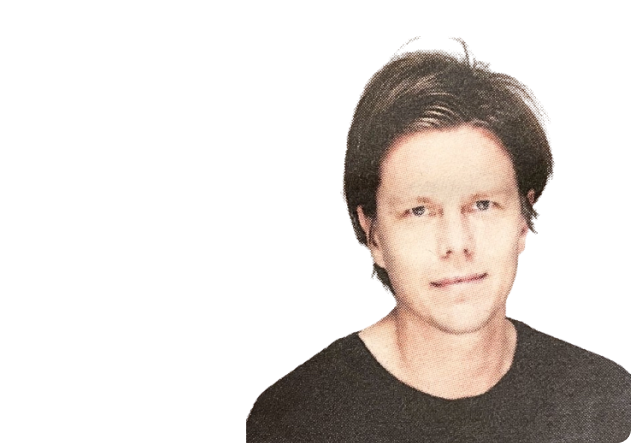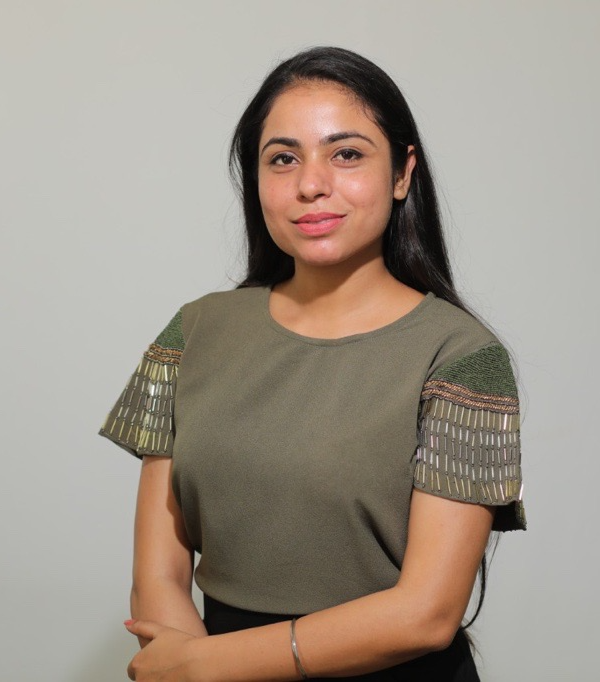Good Design is needed for better future
The future of design is likely to be shaped by a number of technological and cultural trends. Design trends will showcase...",

John Sebastian is a product design leader specializing in building robust teams and fostering customer-centered environments. His focus is on enhancing emotions and surpassing customer expectations. He is currently the Lead Design and User Experience at Novo Nordisk. Previously, he held senior roles at Samsung, SONY, and his own firm. John co-founded and designed the Smart Parking Watch, now in millions of cars. He is a noted speaker and occasional author, and his team's success has been highlighted in media outlets like Bloomberg Businessweek, the New York Times, and the Massachusetts Institute of Technology.
Let us quickly get to our expert's point of view.
Ans : Great design comes from a great product team. And it’s about way more than experience or expertise. Great design depends on the right organizational conditions for teams to drive excellence in their work. A part of the job of designers and product managers is to make sure that we’re solving a problem in a way that works for both the business and the customers.
Business organizations and processes need to adapt to Design Thinking and its human-centric approach to design, which can be easier said than done. However, on the other hand, Design Thinking can help mitigate gaps and find the right balance of customer centricity and business alignment.
So first, the organization as such needs to feel comfortable with the framework, ideally through learning by doing. Secondly, Design Thinking cannot stand alone to make it successful, we need to find the right spectrum and tools to create alignment with the business objectives (KPIs or OKRs).
When settled, we need to work with the team to meet the objectives efficiently and successfully, and triangulating customer metrics to the business objectives ensures we’re creating a broad understanding to generate promising candidates for deliberated decisions going forward. Just to clarify, customer experience metrics can consist of a monitoring and evaluation framework, a customer goal, leading indicators, and an algorithm. Once the mixed methods and tools are in place, and the processes are reinforcing and empowering the team, the organization will move incredibly fast.
Ans : I am always amazed when organizations and teams build awareness. Research has shown that objective awareness helps individuals develop a broad perspective and viewpoints, leading to even deeper social awareness, connections, and relationships. In product innovation, awareness is a must for teams to grasp the possibility of new ideas and new actions that may not inherently align with one's worldview, which consequently sets the keystone to empower decision-making at all levels.
Ans : Much has changed over the past 20 years, the field of UX has evolved through advancements in the field but maybe more significantly by the continuous digital transformation. The rise of technology, the internet, mobile devices, and right now artificial intelligence have all accelerated UX design to evolve faster than ever. The area is changing so quickly that everyone in the field needs to be constantly learning and, on their toes, to keep up. I believe we will see an increase in regulations going forward, especially with AI, and generally an increased focus on accessibility, adoption of design systems, the evolution of UX tools, more consistent user research, and a stronger focus on emotional design.
Ans : I’m technical by training and a designer by trade. I use the techniques from both worlds to drive teams toward desired outcomes. In the early days of my career, I worked for high-end luxury brands and learned a lot about the craft side of developing products to meet the needs of a very narrow group of consumers with a lifestyle that can be very hard to please or surprise. Followed by almost 15 years in advanced consumer electronics, I saw the power of experimentation at scale and teams aligned toward meaningful metrics. In between it all, I have been involved in a series of startups doing hands-on design and more, which speed-trained me to have a very agile mindset that is still a big part of how I approach things and lead.
My experiences have taught me the power of inspiring people by using positive examples, making it easier for people and teams to adopt new behaviors — we all know how old habits and ways of thinking can be hard to break. Beginning of this year, I stepped into the pharmaceutical industry at Novo Nordisk’s Digital, Data, and IT and am now deeply focused on how we operate as a single cohesive design, product, engineering, and data team to help tie everything we do to our company’s purpose, which is to drive change to defeat diabetes and other serious chronic diseases.
Endeavoring into the unknown can be extremely challenging but it’s such an incremental part of working with design. Motivation and ambition as having a firm belief in the ability to fix things for the better are key traits. I remember an early childhood experience that set a mark for me. At a young age, my bicycle had a flat tire which was usually a fixing job for my dad, but this day he put the toolbox in front of me, smiled, and said, “I’m sure you can do this”. This learning experience had me rather terrified, slightly overwhelmed with the responsibility, and struggling to know exactly where to start. I however grew with the task, and it taught me to stay brave, embrace challenging opportunities, and how important it is to show trust in your people as a leader.
Ans : When this happens, it’s one of the best days. Finding the right balance involves cultivating a flexible mindset that allows for open exploration of ideas, while also applying critical thinking and analysis to refine those ideas into effective solutions. This needs to involve a willingness to take risks, experiment, and learn from failures, while also maintaining a focus on data-driven insights and measurable outcomes. Ultimately, achieving a balance between imagination and intellect requires a multidisciplinary approach that leverages creativity, innovation, as well as data-driven insights and analysis to drive successful outcomes.
Ans : I love my daily to-work commute listening to Podcasts. A few that top my list and have given me many great learnings is the “MIT SMR’s series; Me, Myself, and AI - a Podcast on Artificial Intelligence in Business”, where people who are achieving big wins with AI share their experiences. I also enjoy the “New York Times, Ezra Klein Show” about real conversations, ideas that matter, and book recommendations. For reading, I’ve recently finished two very interesting and engaging books: Near Future Laboratory’s “Manual of Design Fiction” and “How to Pay Attention in a Distracted World” by Christian Madsbjerg.
Ans : Sad to say, many popular products could benefit from better UX design from a user perspective, I’m sure we have all such experiences. It’s a signal of how the world changes so rapidly and changes the contexts in which we operate. The need to identify pain points caused by changing complexity requires investment in thinking very deeply about the design problem at hand, but also more broadly at the context around the problem and the systems that support it. One of the many reasons why we see a strong increase in expanding and strengthening insights, product design, and UX capabilities within Fortune 50 companies.
Ans : A good mix of creativity and analytical skills besides curiosity, empathy, and strong communication skills.
Ans : Throughout my career, I’ve been lucky to learn a ton from exceptional peers, mentors, and managers, as well as from my experiences moving across companies, industries, and roles. Along the way, I realized that one area where I excel is in championing design within an organization and creating an environment that allows teams to thrive and produce their best work, not just in design but also involving engineers, data scientists, and product managers with whom they collaborate.
Ans : AI is likely the most transformative technology we will see in our lifetime, and it can seem overwhelming to foresee how it will impact our lives, and weigh the pros against the cons. So, we need learnings and experiences to help us imagine how it can enhance productivity and help us create new opportunities. One way is to educate product teams in using AI in Design Thinking to reach clear objectives in our quest to develop fully digital,human-centric, and eventually more quickly outcomes.
Ans : Having recently joined the pharmaceutical industry and an amazing company, Novo Nordisk, which represents strong values and a great culture with a relevant purpose, I’m thrilled to get up every day and work hard to connect what we do to the company’s mission. This will surely be my formula for the future, and I would recommend everyone in the design community to stick with their values, be true to who you are, and follow your dreams. More practically, my advice would be to also stay agile, adapt to new learning and tooling quickly, be brave, and push the boundaries.

Senior Consultant
Leave your details so we can contact you back.